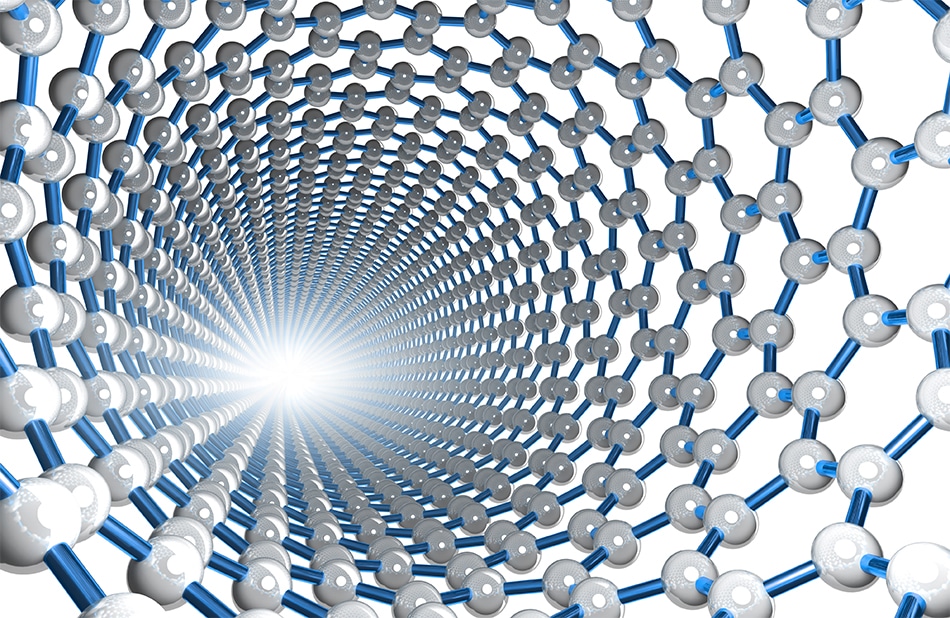
Rice University researchers recently discovered that excited electrons are capable of tunneling across a nanoscale insulator gap – going from one metallic conductor to another.
However, the bigger revelation from the same research was determining that electrons in the gap generate a photovoltage about 1000 times greater than if the gap didn’t exist, according to a new report in the Journal of Physical Chemistry Letters. This discovery revealed it may be possible to develop nanoscale photodetectors that can change light into electricity, potentially for use in advanced sensors or other state-of-the-art electronics.
In a statement, the study team said their main research goal was to determine if and how electrons jump a nanocale gap under a range of circumstances, like in extremely cold temperatures. Using gold wires, the team zeroed in on the nanoscale qualities of what’s referred to as the Seebeck (thermoelectric) effect.
First identified in 1821, the effect involves heat being transformed into electricity at the union of two wires made from different metals. German physicist Thomas Johann Seebeck found that a current would develop across a single conductor when one component is warmer than the other.
Common household thermostats are based on the Seebeck effect. Essentially, two different metals are joined to make a thermocouple. Using the know difference between the Seebeck coefficients of the metals, how they transform heat into electricity, and the voltage across the thermocouple, a thermostat can determine a room’s ambient temperature.
In an effort to see the Seebeck effect using just a single metal, the Rice University team used a laser to cause a heat gradient over a bowtie-shaped gold nanowire. That produced a small current, like the one seen in the Seebeck effect. However, with a nanogap splitting the wire, the team found a different mechanism at work.
The study team said they chose gold because electrons slosh back-and-forth in the metal when it is heated with a laser, and this is activity can be easily detected. Based on the metal, its shape and size, this activity may only appear when triggered by a laser set at a given wavelength.
In the gold wires, the laser produced "hot electrons" that gradually moved their energy to the metal’s atoms, shaking them as well. That energy was then released as heat.
In continuous wires, the temperature gradient brought on by the laser also produced small voltages. However, if nanoscale gaps were present, the hot electrons made it through the gap and produced much bigger voltages just before dispersing.
Based on their observations, the team was able to draw three big conclusions. Firstly, the thermoelectric properties of metals can be tuned by designing them on nanometre scales, allowing for thermocouples comprised of one material to be created. Secondly, a concentrated laser beam can work as a scannable, local source of heat, which allows for the mapping of any desired effects. Thirdly, in thermocouples with nanoscale spaces, the photovoltage can be a thousand times greater. This is likely because the tunneling is based on high-energy electrons before they shed energy as heat. This final discovery has major implications for photodetector technology, and it revealed the possibilities that may be realized if "hot electrons" can be harnessed before losing their energy.
The study team said gold have proven to be the best metal so far for achieving this tunneling effect, and this is likely due to it the fact that it has plasmons, or collective excitations of electrons, on its surface when it is struck with a laser.
“You don’t need plasmons for this effect, because any absorption, at least in a short time, is going to generate these hot carriers,” said study author Pavlo Zolotavin, a postdoctoral research at Rice. “However, if you’ve got plasmons, they effectively increase the absorption. They interact with light very strongly, and the effect gets bigger because the plasmons make the absorption bigger.”
Disclaimer: The views expressed here are those of the author expressed in their private capacity and do not necessarily represent the views of AZoM.com Limited T/A AZoNetwork the owner and operator of this website. This disclaimer forms part of the Terms and conditions of use of this website.
Sources:
Rice University
Journal of Physical Chemistry Letters
Image Credit: Shutterstock.com/forance